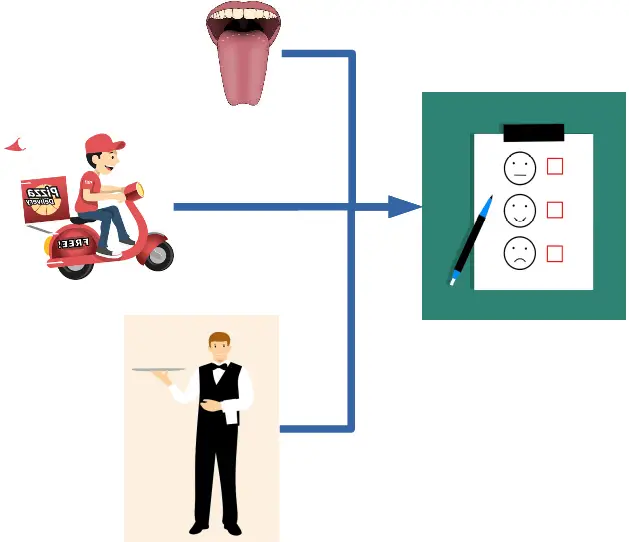What is marketing research? How is it different from market analysis? This article describes marketing research, its goals and objectives, the kind of data gathered, and how those data are analyzed.
As my students in research come from various disciplines, I need to balance the topics and generalize as much as possible on research principles. However, I strive to give customized examples relevant to my student’s backgrounds. This approach will help them appreciate better the role of research in their respective fields.
Some of my students are business graduates, and many of them cannot imagine how research works in their field. The truth is, research is very much relevant in business, particularly the marketing research aspects.
Thus, I need to define marketing research, state its goals and objectives, identify data to gather, and analyze sample data. I provide a detailed and practical example to showcase how market research works. That’s where market analysis comes in.
Definition of Marketing Research
Zikmund (1999) defines marketing research as a systematic and objective process of generating information to aid marketing decisions. This process includes specifying what information is required, designing the method for collecting data, managing and implementing data, analyzing the results, and communicating the findings and their implications.
Marketing research is a systematic and objective process of generating information to aid in marketing decisions.
Simply put, market research is the process of using research to increase sales or income within the shortest time possible to gain the maximum profit.
The most crucial thing in this definition is that marketing research helps business owners or marketing managers make decisions as in any research venture. Marketing research sheds light on customers’ preferences, the long-range profitability of business operations, and other product-oriented concerns.
Successful companies like Google, Microsoft, and IBM must be employing excellent marketing research activities to keep their edge in the competitive world of business. Data support decisions related to their products and services. Managers decide with calculated risks.
Marketing research requires conceptualization, data planning, data gathering, and the application of appropriate statistical tests. Data analysis will show correlations, differences, or trends useful in decision making.
Goal and Objectives of Marketing Research
The main goal of any business is to achieve more sales, greater productivity, greater or faster return on investment (ROI). Marketing research could provide the information required to realize this goal.
The objectives of marketing research most commonly revolve around the following interests:
- find out which products are preferred by consumers,
- determine which group of people buy which type of product,
- where the buying customers live,
- what age group search for and buy which product,
- how long people stick with the product they purchase,
- at what time or periods do people buy which product,
- what do people like and dislike,
- how much are people willing to pay for a good or service, and
- a lot more purposes that business management requires.
Simplifying matters, marketing research essentially wants to find out the characteristics of consumers and see how they should design products, improve services, develop strategies or techniques to capture these customers. A business thrives if it answers the needs and wants of its customers and makes them competitive.
If a company does not understand its customers, then most likely it will suffer a great loss in sales thus reduced income, spend more than they earn, and ultimately get bankrupt. Their services or products become irrelevant to the customers’ needs and wants.
Why produce a product that does not sell anyway? Why offer a service that is not in demand? And why keep on operating if the business is losing?
How the Results of Marketing Research are Analyzed
The data gathered about customers is useless unless analyzed using advanced statistical applications. Various statistical approaches analyze data obtained from marketing research. Usually, multivariate statistics such as multiple regression, factor analysis, canonical correlation, and multiple discriminant analysis are applied.
What is multivariate statistics and why multivariate?
Multivariate statistics refers to analysis using not just a few variables; not two, or three but several or many variables simultaneously. Aside from saving time, the results of such analysis can pinpoint customer characteristics that matter when it comes to product purchases or sales.
To further clarify this idea, a market researcher might ask: “Which of the following customer characteristics: age, gender, occupation, income, residence, or nationality click more often the ads on an electronic product?”
The answer to this question may be obtained from data gathered when someone signs up for a service such as an email or a social networking site. When you sign up for whatever free services are available on the internet, bear this in mind. There is no such thing as free lunch. In the business world, you cannot afford to be a free rider. You need to pay for a good or service that you enjoy.
Those who click on the ads on electronics are potential customers, and knowing their characteristics will help sellers focus their marketing strategies. A multiple regression analysis will show this information. But of course, marketing researchers would have to find out if there is a correlation between clicks and sales. A simple correlation analysis will enable them to answer this question.
If the data analysis reveals that gender has something to do with interest in an electronic product, then the product sellers should design marketing strategies that consider gender roles in product selection. What products do men and women want? On the other hand, age may also be a factor. So, the researcher must consider this, too.
A model can then be constructed to estimate demand for the product using a combination of factors that predict its sales. The following section presents such a model to show how different variables define the consumption of a particular product.
Example Conceptual Framework on Marketing Research
One of the readers of my article on developing a conceptual framework asked if I could provide an example conceptual framework on marketing research. Hence, I include this concern in this section to illustrate how having a conceptual framework before undertaking marketing research will guide the study.
One of the popular marketing research activities focuses on product quality and services. I illustrate product and service research with a personal experience below.
Customer Feedback on Products and Services
A few years back, I answered a simple questionnaire soliciting my feedback on a pizza shop’s products and services. The questionnaire sought my rating of pizza taste, service speed, and the courtesy of the server.
As part of their franchise, I would presume that the pizza business owner or manager solicits feedback from the customers. They do this to see how customers perceive the consumed product and the service associated with it. The main variables in this study, based on the questionnaire, are pizza taste, service speed, and waiter service quality to the customers.
We can plot the paradigm of the study as follows:

Figure 1 above shows the conceptual framework of the study. It is an abstract representation of what the pizza manager or consultant has in mind. It shows the variables, namely pizza taste, service speed, and waiter courtesy.
Perhaps, the researchers had conducted a literature review and discovered that the predictor variables consist of these three characteristics. These variables are the crucial factors to consider as correlates of customer satisfaction.
Why were the three independent variables, namely pizza taste, service speed, and waiter courtesy selected?
A literature review on customer satisfaction may have revealed that these variables are determinants of customer satisfaction. But in the particular location where the pizza restaurant operates, any of these variables may be more important than the other.
Customer Preferences Vary Geographically
Mittal et al. (2004) found out that customer preferences vary geographically. This finding implies that clients in one place may prioritize courtesy over taste. In one location, customers may put a premium on service speed. In another spot, customers may not mind much either the speed or courtesy but the taste.
So how will the marketing manager use the findings of the study in the given example? If, for example, customers in the location I’m in prioritize service speed, then the appropriate action should be to improve pizza delivery speed without compromising taste and courtesy.
This example illustrates the importance of marketing research in making decisions that can help businesses grow. Research findings guide marketing managers on what steps to take to improve their business operations.
How to Do Market Research
In the age of information, it pays to be creative and resourceful. The Internet provides a tremendous amount of information to help you carry out marketing research without leaving your home.
There are just so many ways you can do today using available tools like Google Analytics and government websites. You don’t even have to go out of your home to do market research. What is essential is for you to ask the right questions that research can answer.
Listen to the following video on how you can do market research for free.
To sum it all up, marketing research is a tool that managers and business owners can use to understand their customers better and deliver their goods or services just the way their customers would love it. Informed decisions are better than just a hit-and-miss approach that does not guarantee the desired results.
It’s simply asking the customers what they want, and you provide it if you intend to grow your business and increase profits.
After defining marketing research and giving an example conceptual framework for a pizza study, I present the details of market analysis using a standard multivariate statistical analysis tool.
Before everything else, the concept “market analysis” should be defined first. What is market analysis, and how is it used?
Market Analysis Defined
Marketing strategies work best when founded on a systematic evaluation of consumer preferences. What do consumers want? How do they respond to a product or service? Marketing research provides answers to these questions.
Hence, market analysis can be defined as the process of evaluating consumer preferences using a systematic approach such as marketing research, among others. Market analysis is a detailed examination of the elements or structure of the market.
Why is a market analysis done? An analysis is done to draw out important findings for interpretation, discussion, and finally, a decision on what steps to make.
Marketing Research Example: The Pizza Study
In this example, I will use the conceptual framework given in the pizza study in the preceding section. The variables in this example include pizza taste, service speed, and waiter courtesy as determinants of customer satisfaction.
To find out what customers want, let us have sample feedback data from 200 pizza shop customers.
Coding the Variables for Market Analysis
Data analysis requires the conversion of subjective customer feedback into numbers. We need to code the data so that statistical software applications can analyze them.
Here’s how to code the variables used in this study namely, pizza taste, service speed, and waiter courtesy:
Pizza Taste
1 – Very bad
2 – Bad
3 – Moderate
4 – Good
5 – Very good
Service Speed
1 – Satisfied
0 – Not satisfied
Waiter Courtesy
1 – Courteous
0 – Not courteous
Level of Satisfaction
Let us assume that the following Likert scale applies to the customer’s level of satisfaction:
1- Not at all satisfied
2 – Slightly satisfied
3 – Moderately satisfied
4 – Very satisfied
5 – Extremely satisfied
If for example, the customer is satisfied with pizza taste, service speed, and waiter courtesy; he rates everything “5.” If he is not satisfied with courtesy, then he might rate it a “0.”
Analyzing Data Using Multiple Regression Analysis
After collecting data from 200 pizza customers as input to the multiple regression analysis, the following is the result of data analysis.
Result of the Regression Analysis
The following sample table presents the results of the multiple regression analysis using a simple spreadsheet software application with regression capability. It consists of two parts:
- general relationship between the dependent and independent variables, and
- details on the relationship between satisfaction score and pizza taste, service speed, and server courtesy.
| Part 1. Regression Statistics | ||||
| Multiple R | 0.66 | |||
| R2 | 0.44 | |||
| Standard Error | 0.47 | |||
| Adjusted R2 | 0.43 | |||
| Observations | 200 | |||
| Part 2. Details | ||||
| Coefficients | Standard Error | t-Statistics | p-Value | |
| Intercept | 2.9192 | 0.2691 | 10.8486 | 0.0000 |
| Taste | 0.0326 | 0.0526 | 0.6208 | 0.5355 |
| Speed | 1.3245 | 0.1076 | 12.3100 | 0.0000 |
| Courtesy | −0.0161 | 0.1098 | −0.1469 | 0.8834 |
Notice that the overall relationship has R values. Among these R values, the most important for interpretation is the Adjusted R2 value. This value represents the relationship between variables of the study. The value obtained here is 0.43. This value means that 43% of the variation in satisfaction score is accounted for by the three variables.
Closer scrutiny of the details in Part 2 reveals that service speed significantly relates to satisfaction score. The red font indicates this significant relationship (for better understanding, please read the post on how to determine the significance of statistical relationships).
Interpretation of the Results
We can say with confidence that among the variables studied, service speed relates significantly to customer satisfaction. If you look closely at the entries in the data set, for every 5 or 4 satisfaction score, a 1 corresponds to efficient service speed, i.e., the customer is satisfied with service speed. Take note, however, that this interpretation holds only to the particular location where the study transpired.
Given this result, the marketing manager, therefore, should focus on the improvement of service speed to satisfy customers. This simple information can help the pizza business grow and gain a competitive edge. Market analysis guides decision-making and avoids incurring the unnecessary cost associated with the hit-and-miss approach.
Conclusion
Well, this is just an introduction to market research with a simplified example. The point is that market research is a crucial component of business strategy especially among large businesses. A little change in the practices of a large company or even a small business can mean a lot in sales. The information provided by market research is an important part of business decision making.
References
Hillman, C. H., Erickson, K. I., & Kramer, A. F. (2008). Be smart, exercise your heart: exercise effects on brain and cognition. Nature Reviews Neuroscience, 9(1), 58-65.
Mittal, V., Kamakura, W. A., & Govind, R. (2004). Geographic patterns in customer service and satisfaction: An empirical investigation. Journal of Marketing, 68(3), 48-62.
Zikmund, W. (1999). Essentials of marketing research. Dryden Press. 422 pp.
© 2016 May 20 P. A. Regoniel
Updated: November 2, 2020; November 14, 2021
[cite]



Very helpful
Thanks it has been enlightening information